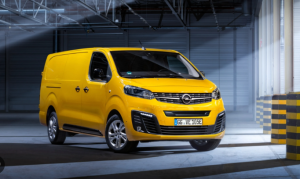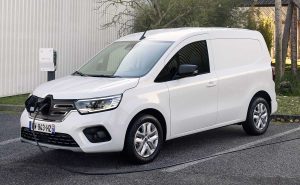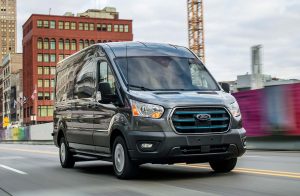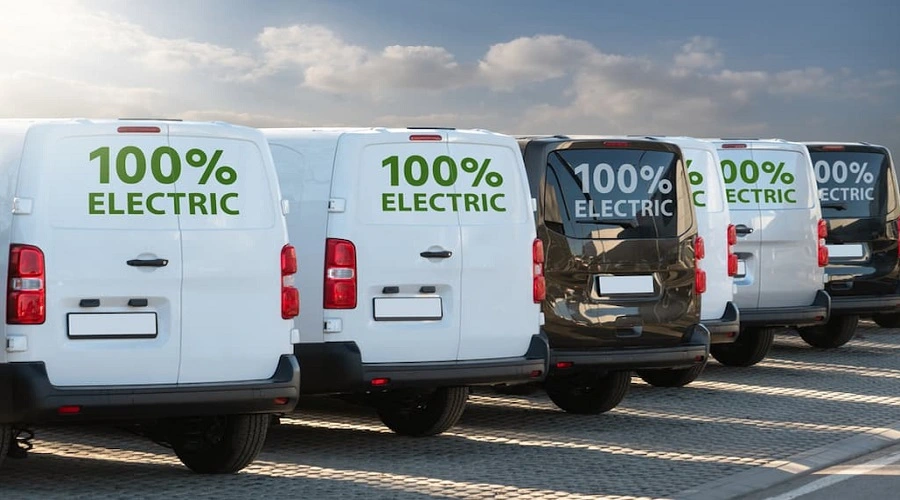According to a survey conducted by the Arval Mobility Observatory (focused on recording and forecasting corporate mobility trends), one in three companies in the Netherlands has a plan to make their fleet more sustainable.
Indeed, these companies anticipate that by 2026, half of their fleet of light commercial vehicles will be electrified, and a quarter will be fully electric.
This information was revealed based on the results of the latest Observatory barometer.
To achieve the proposed goals, the companies will be adding zero-emission units.
The survey, conducted with 307 organizations in the Netherlands, also revealed the current trends, which align with the rise in registrations within the segment.
In the first five months of the year, electric van sales in Europe saw a 74% increase.
This accounts for 50,000 new vehicles on the roads, surpassing the sales of gasoline models.
Hence, battery-powered light commercial vehicles now stand as the second preferred option for Europeans, trailing only behind diesel.
The data obtained demonstrates that electrified transportation is an increasingly chosen option for logistics companies.
This stems from the fact that starting from January 1, 2025, municipalities in the northwest country can introduce zero-emission zones for city commercial vehicles.
Currently, there are four cities in the Netherlands with an environmental zone: Amsterdam, Arnhem, The Hague, and Utrecht.
However, it’s worth highlighting that the published study shows that 26% (one quarter) of companies are not considering implementing electric vehicles in their fleets due to the purchase price.
Another quarter argues that the number of public charging points is insufficient for transitioning to 100% electric mobility.
This is because business owners are seeking operational reliability and, in some instances, are uncertain if vehicles can meet their expectations.
However, Arjos Bot, Head of Consultancy and Mobility Observatory at Arval in the Netherlands, said:
“For most companies and their desires regarding trailer weight, range, and payload, there is an electrified alternative.”
Read more: Electric Grid Capacity Concerns in the Netherlands Following AFIR Approval
Options for Fleets: These are the Best-Selling Electric Vans
One of the top-selling electric vans in Europe is the Ford E-Transit, which features a 68 kWh battery providing a range of 317 kilometers.
The standout feature of this model relates to its charging performance.
At an alternating current station, the maximum capacity is 11 kW, taking around seven hours to fully charge the battery.
With a fast charger, the maximum power is 115 kW, allowing for a 20% to 80% battery capacity charge in half an hour.
It has a maximum towing weight of 750 kg and a payload of over 2100 kg.
Additionally, it comes equipped with an innovative reverse camera that detects bicycles and pedestrians.
Another notable electric van in the market is the Renault Kangoo E-Tech Electric.
This model boasts a towing weight of up to 1,500 kg, a 45 kW battery, and a range of 285 kilometers.
Full charging times are four hours with an 11 kW unit or two hours with a 22 kW one.
Regarding fast charging, it can be achieved with a maximum power of 80 kW.
Lastly, the Opel Vivaro-e presents a versatile option, allowing a choice between two battery packs: 50 kWh or 75 kWh, providing ranges of 230 km and 330 km respectively.
Using an alternating current charger, it can be powered up at a maximum of 11 kW, taking between five and eight hours to charge an empty battery.
With a fast direct current charger, the maximum power is 100 kW, enabling a charging session of up to 45 minutes.
It can vary in length (L1, L2, or L3) and height (H1 or H2), has a maximum load capacity of 1,000 kg, and the option to tow a trailer, with a maximum weight ranging from 750 kilograms (unbraked) to 1,000 kilograms (braked).










